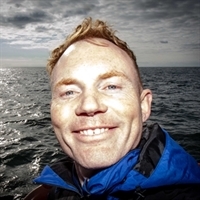Energy industry leader Vattenfall and Wageningen Marine Research (WMR) of Wageningen University & Research had similar goals in improving the health of the planet, researching nature-inclusive designs in construction for biodiversity. With project KOBINE, artificial reefs made of rock beds were placed around the monopiles of Hollandse Kust Zuid wind farm in the North Sea to explore biodiversity growth over time.
BeeX aided KOBINE by providing:
According to WRM, their earlier experience with other ROVs was less than ideal, finding that the ROVs’ station-keeping abilities were too weak to fight the strong currents of the North Sea. This is a common problem for ROVs as most ROVs struggle with fighting currents in all directions greater than 1 knot.
Beyond this, piloting traditional ROVs to obtain meaningful results proved to be a difficult task. WRM’s piloting confidence wavered upon finding the ROVs’ controls to be hard to master on top of figuring out how to navigate the ROVs through harsh waters. Piloting was even beyond their job scope as their primary task was to analyze the data received, not pilot the ROVs themselves–and for researchers, unbiased data is gold.
When WRM reached out to BeeX for the ease and accuracy of data procurement, BeeX’s hovering autonomous underwater vehicle (HAUV) was able to deliver. The HAUV vehicle A.IKANBILIS was successfully deployed at two different months to inspect the rock reefs, using a mixed inspection technique of close vehicle inspections (CVI), 3D mapping, and mosaic mapping.

CVI enabled geo-referenced visual inspections of marine life 0.2 meters from the seabed while 3D and Mosaic inspections mapped out the overall layout and terrain of the artificial rock reefs. Moreover, a laser accessory was installed to measure the size of the marine organisms observed.
On top of being able to fight knots 1.5 strong, the HAUV completed inspections with quality video recordings and image confirmations without project delays from the strong tides of the North Sea.
Limited windows of time for operations where currents are low enough for the HAUV make time, efficiency, and accuracy very crucial. Fortunately, due to speed, efficiency, and auto-piloting capabilities, A.IKANBILIS was able to maximize operational productivity by inspecting more areas and collecting more data within the same number of hours in comparison to WRM’s previous ROVs.
Overall, A.IKANBILIS proved to be more productive and data accurate than other ROV vehicles whilst retaining ease of use and speed of mobilization.


Data was broadcasted on BeeX’s data reporting software Sambal Portal in real time during deployments, of which were summarized in models, images, and videos on the same day to avoid project delays. Enthusiastically, the WRM team enjoyed following what the device was seeing on a monitor to watch the fruits of their artificial reef experiment live with marine life bursting through the rocks.
Researchers later used the rich repository of geo-referenced data, HD images, and video footage to identify species of interest and compare levels of biodiversity within their rock reefs.

In the spirit of ecology, it is hoped that the comprehensive data obtained from A.IKANBILIS would aid the expansion of knowledge in the field of marine research.